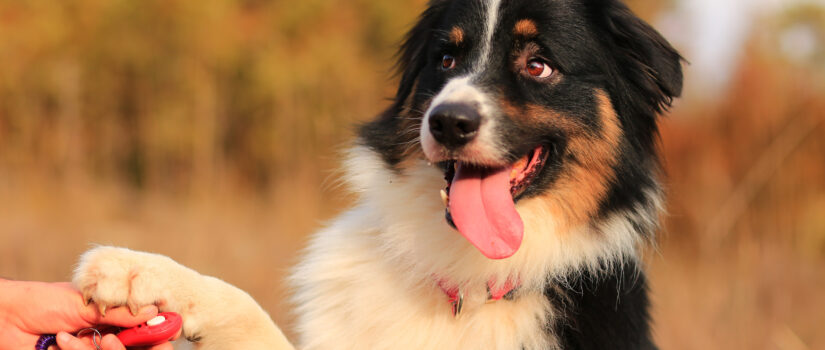Types Of Dog Training: Find What’s Right For You
The dog training process is a wonderful journey that you and your pup get to share together. With so many end goals and dogs of all kinds, there are multiple types of dog training methods to choose from.
In this article, we’ll break down the different types of dog training, and help you decide which training method is best for you and your dog.
Types Of Dog Training
Since there are so many different types of dogs and fur parents out there, it only makes sense that there are multiple types of dog training as well. Whether your pup is a family dog or a service dog in training; there is an option for you!
Positive Reinforcement Training
Positive reinforcement style training is based on training your dog on the desired behavior with the expectation of a reward. The idea is to teach your dog the command by showing them that they will be offered some type of positive reward at the end. By doing this, your dog will learn that the desired behavior results in something they enjoy.
Positive reinforcement training is free of any harsh verbal and physical punishment. The dog will learn that ignoring your command simply results in them missing out on a reward, therefore encouraging them to follow through without any punishment needed.
Your reward process must immediately follow the desired behavior and should continue to be implemented over time once the behavior is learned. Many people also pair positive reinforcement training with clicker training, so your dog will always respond to the sound of the clicker going forward.
Clicker Training
Clicker training is another form of positive reinforcement style training. This style is essentially the same process as positive reinforcement, just with the addition of a clicker before the reward is offered. Since the clicker is first paired with the reward until your dog learns the desired behavior, the clicker eventually becomes the award once the skill is mastered.
Clicker training is one of the most popular training styles among professionals, and is the perfect way to take positive reinforcement style training up a notch! This is a wonderful way to move your pup away from expecting treats and teach them how to accept the clicker as the reward itself.
Science-Based Training
Science-based training is built on a constantly changing landscape of information. This style of training uses conditioning techniques to train a dog based on the dog’s nature itself and their normal canine behavior. Since there are many trainers that believe in teaching a behavior without the award attached, science-based training is at the core of many professional training programs. Due to research being ongoing, science-based training is ever-changing in the dog training world.
Electronics Training
Electronics training relies on electric training devices to teach the desired behavior. Electronic training can involve a shock collar, a collar that sprays citronella, or any type of training device that causes a dog discomfort when they do something “wrong.” Though this training can be effective in some dogs, this style is looked down upon due to the action of causing pain to the dog in training. Electronics training will train a dog to expect pain when they do something wrong, causing many dog trainers and owners to shy away from these tools.
Alpha Dog Training
Alpha dog training is based on the pack mentality. By helping your dog understand that you are the leader of the pack, this means they will obey you based on their respect for the “alpha dog.” Alpha dog training teaches a dog to wait patiently on the owner in order to get what they need without begging or resorting to destructive behavior. While this was a popular training method when dog training first made its way onto the scene, it is becoming less common in professional training facilities.
Choosing The Right Training Style
Choosing your training style of preference will have to be based on the type of life you and your dog live. While a family dog will likely just benefit from positive reinforcement style training, professional canine positions may need to follow a more structured approach to training. The right training style for your dog will depend entirely on the goal you have in mind for your canine companion. If you are struggling with which method is best, you can always contact a local dog trainer to get some advice on what training style is best for your end goal.
Understanding the Different Dog Training Methods
Each training style is different and has its own place in the dog training realm. Be sure to review the different styles of dog training that we mentioned above, and you can find the best approach for you and your furry friend going forward.
Source: SitStay.com

